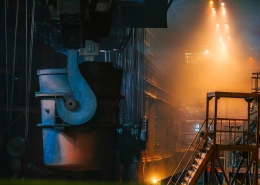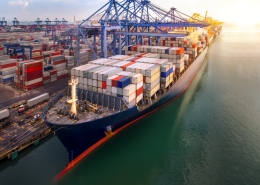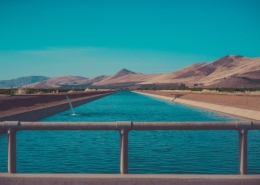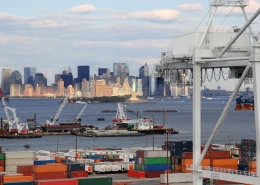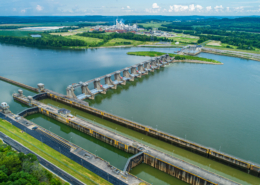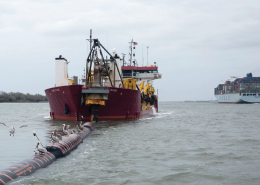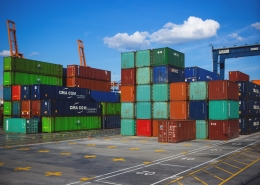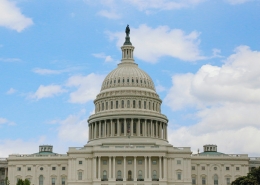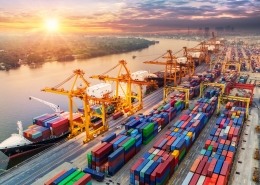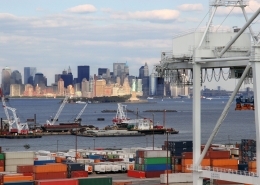The Senate Committee on Environment & Public works met Wednesday, December 6th to discuss the impact of funding from the Infrastructure Investment and Jobs Act (IIJA), also known as the Bipartisan Infrastructure Law, on various environmental programs and uses, including the Federal Highway Administration’s Wildlife Crossings Program.
Chairman Carper (D-DE) kicked off the hearing, “IIJA Investments in Habitat and Ecosystem Restoration, Pollinators, and Wildlife Crossings”to hear discussion on how agencies are leveraging funding and collaborating on numerous programs to ensure the preservation of natural ecosystems and well-being of communities and travelers. The Committee invited the below federal agency representatives as witnesses for the hearing:
Noting that this December marks the 50th anniversary of the Endangered Species Act of 1973, Director Martha Williams’ comments provided a brief overview of numerous environmental protection and community improvement efforts underway by the U.S. Fish and Wildlife Service (USFWS) that rely upon the $450 million provided by Congress through the IIJA. Some of the projects mentioned included fish passage projects, which remove barriers like unused dams, allowing fish to access native upstream habitats as well as mitigating flood impacts on nearby communities. Another project mentioned is located in the Klamath Basin, where USFWS is installing pumps to improve water availability and investing in infrastructure for the waterfalls and a national fish hatchery for the basin. A final USFWS project is located in Lake Tahoe, where investments are being made to monitor and address issues with invasive plant species.
While Williams provided a high-level snapshot of environmental protection efforts underway for the USFWS, a primary focus of the hearing was on the overlap between the two panelists’ comments. Comments from Williams and Brian Fouch, with the Federal Highway Administration (FHWA), highlighted interactions between motorists and wildlife and discussed the impacts of recent funding allocated for wildlife crossings through the IIJA. The panelists provided an overview of the safety benefits for motorists and animals, the renewed habitat connectivity provided by crossings, recent awarded grants, and the significant agency efforts in collaboration and coordination for project delivery.
The IIJA included $350 million in funding over five years for the construction of large wildlife crossings, primarily in the form of competitive grants for fiscal years 2022 through 2026. Entities eligible to apply for these grants include state DOTs, metropolitan planning organizations (MPOs), local governments, regional transportation authorities (RTAs), Indian tribes, special purpose districts or public authorities, federal land management agencies, or a partnership of any of these.
Though difficult to track (crash databases often exclude incidents with less than $1,000 in property damages, some collisions go unreported, etc.), research has estimated that there are between one to two million collisions between vehicles and large animals in the U.S. annually. These collisions lead to an estimated 26,000 vehicle passenger injuries and 200 annual human fatalities, as well as significant costs in property damage and law enforcement agency costs for response and animal carcass removal. Similarly, impacts to wildlife are significant. An animal involved in a vehicle collision typically dies on impact or shortly after a collision, and with instances of threatened or endangered species, these collisions can be particularly detrimental for animal populations.
Numerous strategies have been employed to minimize the occurrences of these collisions, including installing wildlife fencing along roadways, adjusting geometric and slope designs for roadways, including roadside drainage features to prevent crossing, adding signage, planting roadside vegetation which allows for enhanced visibility, placing concrete barriers in medians, and utilizing wildlife crossing options. Wildlife crossings are structures that allow for the movement of animals across things like highways and can include overpasses, underpasses, tunnels, and many other options, minimizing points of contact between wildlife and the traveling public.
Williams and Fouch both discussed throughout the hearing that wildlife crossings increase safety for wildlife and the public alike, while also increasing connectivity and reviving fragmented habitats. Additionally, both panelists highlighted the need for these efforts and applauded the influx of funding which allows for a comprehensive approach to tackling many environmental challenges which have plagued communities and ecosystems for decades.
The timing of the hearing coincided with the FHWA’s announcement of the first round of grant funding for the Wildlife Crossings Pilot Program. On Tuesday, December 5th, the agency announced that $110 million in funding would be doled out for 19 wildlife crossings projects in 17 different states, which includes grants to four Indian Tribes. This funding, to be administered by state DOTs, can be used by recipients for crossings, fencing, and other related purposes. Coupled with the states detailed by Chair Carper who are already taking action to increase wildlife habitat connectivity (12 states have passed legislation in the last two years, and an estimated $240 million has already been contributed), many state and federal entities have clearly outlined this as a transportation and environmental priority.
One of the entities selected as a recipient for the crossing grant funding was the USFWS. Williams was careful to reiterate that while her agency works closely with FHWA, USFWS did not influence the selection process. She was also quick to acknowledge the impact of funding and highlight the strong collaboration between the agencies, which was reinforced by Fouch’s positive attitude and words about the USFWS.
Dedicated funding for wildlife crossings via the FHWA’s Wildlife Crossings Pilot Program is a significant development in addressing vehicle and wildlife interactions. The funding within this program is specifically dedicated for these purposes, but crossings, while often competing against other project types in these situations, are eligible projects within some other DOT programs. These programs include the following:
Closing out the hearing, Williams and Fouch were asked about the impact of the IIJA funding in the areas discussed throughout the hearing. While both reiterated many of the topics and ideas already mentioned, Williams summarized her perception of the significant impact of IIJA funding in saying, “[IIJA funding] has demonstrated in spades that when you give nature a chance, it has a remarkable ability to heal. But we have to give it a chance, and the Bipartisan Infrastructure Law has allowed us to do that.”

